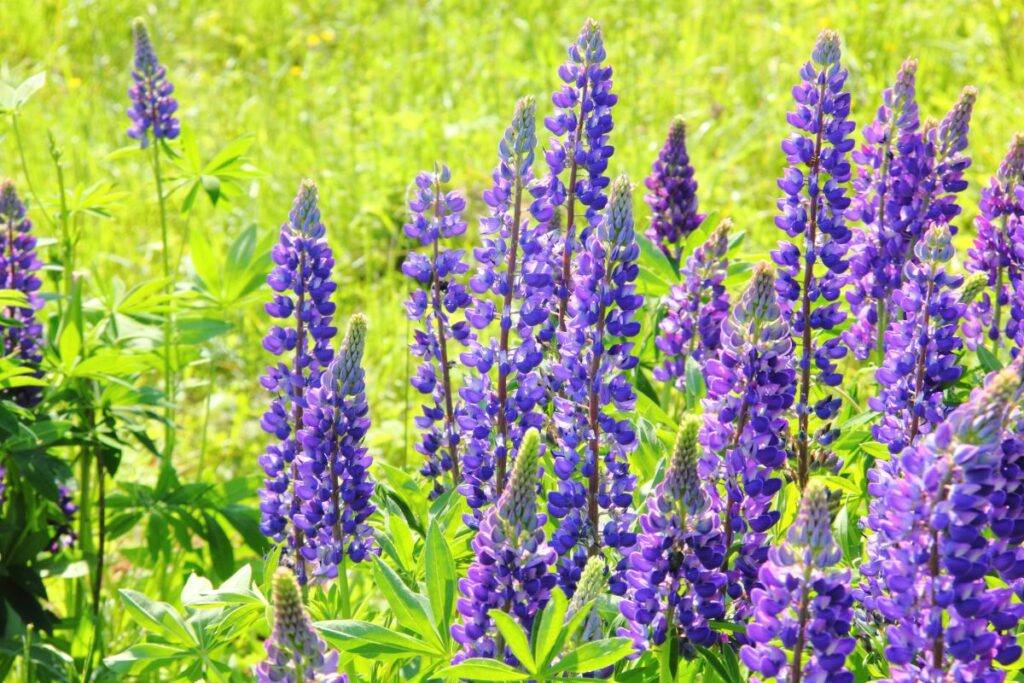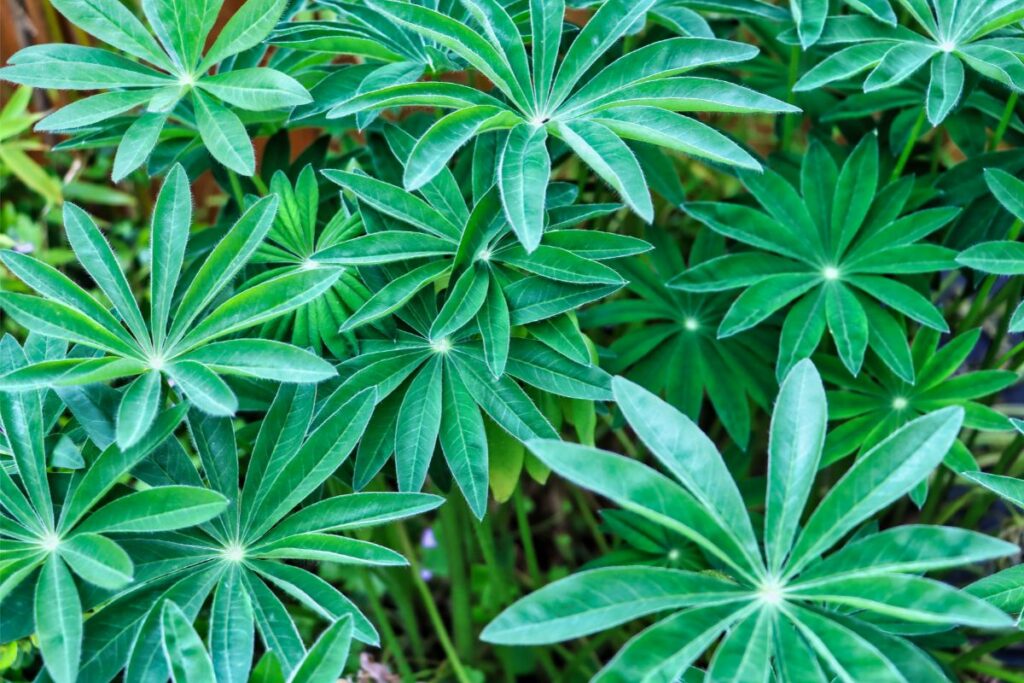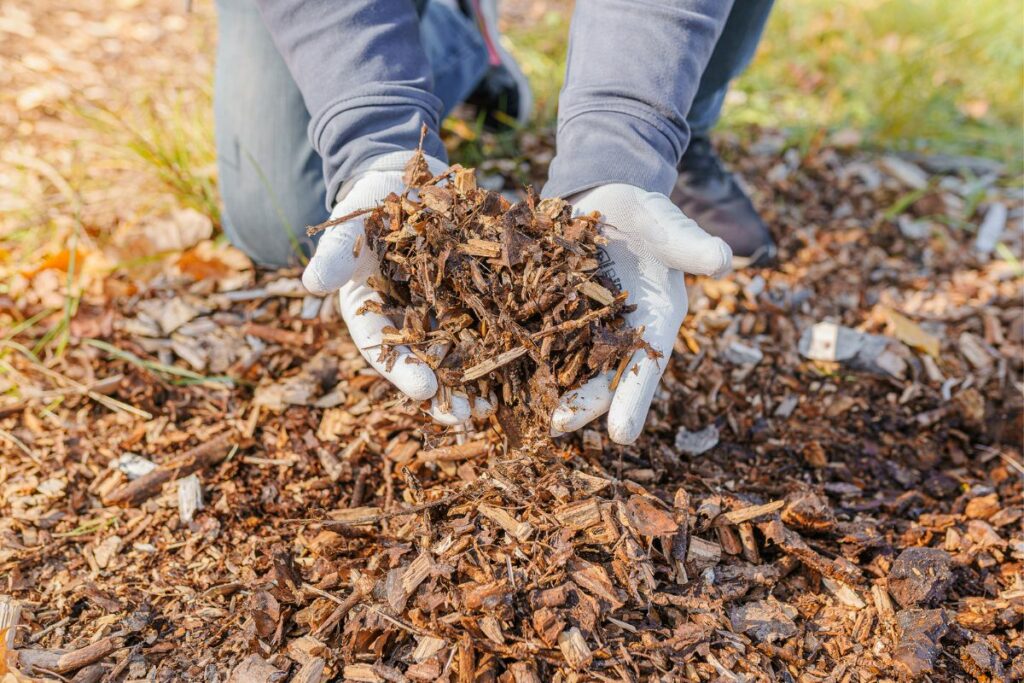Disclaimer: Our editors have used AI to create or enhance parts of this article and some images. All content has been fact-checked by our team to ensure accuracy.
Lupines are an essential element for achieving the quintessential charm of a cottage garden. Their striking blossoms are showstoppers, unfurling a spectacle of color that can captivate any onlooker. As you embark on the journey to cultivate these beauties, it’s important to understand the specifics of their care to ensure your garden truly flourishes.
Equipping yourself with knowledge about lupines will streamline your gardening experience. This includes discovering their diverse varieties, appreciating their origins, and exploring creative landscaping ideas. Fret not about the process, as lupines are generally cooperative in the garden, provided their fundamental needs are satisfied. With the right approach, your lupines will be poised to thrive.
Exploring Lupine Plants

Origins of Lupine Varieties
Lupine plants, members of the legume family, exhibit a diverse range of species found across various continents. Some originate from regions in Europe and the Americas. The popularity of lupines as garden plants has led to their cultivation worldwide. However, they are considered invasive in certain areas, including parts of Scandinavia and New Zealand.
Motivations for Cultivating Lupines
Besides their visual appeal, lupines offer multiple benefits for gardens:
- They deter deer.
- Nitrogen-fixing: They enhance soil fertility, benefiting nearby plants.
- Attract pollinators such as hummingbirds, butterflies, and the Karner blue butterfly.
- Ideal for cutting and arranging in vases.
- Improve soil moisture retention and prevent erosion while reducing dependency on chemical fertilizers.
Integrating Lupines into Your Garden
Lupines can enhance various garden designs:
- Ideal for quaint cottage gardens.
- Plant along fences or walls to create vibrant borders.
- Position behind shorter flowers to achieve depth and contrast, pairing well with red or pink perennials.
Top Picks Among Lupine Varieties
With an array of options, choosing the right lupine variety is essential:
- Wild Lupines: Offer a color spectrum including white, purple, pink, and blue.
- Miniature Lupines: Compact form, native to North Africa, seldom exceeds 1.3 feet in height.
- Silver Lupines: Found on the West Coast of the USA, reach up to 5 feet, acclaimed for their sweet scent and pollinator appeal.
- Riverbank Lupines: Commonly seen near water bodies.
- Large-leaved Lupines: Featuring abundant blue and purple flowers, ideal for summertime gardens.
- Russel Lupines: Hybrid species presenting long spikes with dual-colored blossoms in shades of orange, red, yellow, and purple.
- Arctic Lupines: Recognizable by striking bluish-purple flowers.
- European Yellow Lupines: Bloom with yellow flowers, also a source of edible beans.
- Yellow Bush Lupines: California native with golden flowers, suitable as garden centerpieces.
Blooming Periods and Extension Techniques
Lupines typically begin blooming in the spring or early summer. While the blooms last roughly a month, deadheading can prolong the flowering period, offering a chance for a second blossoming into the fall.
Optimal Lupine Planting Time
- Late Spring Planting: Best opportunity for establishment and next season’s blooms.
- Fall/Winter Planting: Suitable for warm climates; enables growth soon after winter.
Boldly choose late spring to plant lupines, ensuring they are settled before experiencing winter—and anticipate vibrant blooms at the arrival of spring. Warmer regions benefit from plantings at the tail end of fall or onset of early winter, aligning with the favorable climate.
Essential Growing Conditions

Sunlight Levels
Lupines flourish with ample sunlight. To achieve vibrant, colorful blossoms, seek out the brightest area in your outdoor space reserved for these plants. While they can tolerate some shade, full sunlight is crucial for optimal growth.
Ideal Soil Composition
These perennials thrive in well-draining, sandy soils that stay moist. Avoid dense, heavy soil structures to prevent root rot, and consider looser soils that allow roots to penetrate deeply. Amend less than ideal garden soil with drainage-promoting additives, or grow in containers to control soil conditions. Remember, neutral to mildly acidic soil pH levels support the best growth for lupines.
Hydration Guidelines
Lupines are somewhat drought-tolerant and typically thrive with natural rainfall. Water them only during prolonged dry spells to maintain proper moisture levels without overhydrating.
| Condition | Guidelines |
|---|---|
| Light | Full sunlight preferred |
| Soil | Loose, well-draining, sandy |
| pH Range | Neutral or slightly acidic |
| Watering Need | Only during drought conditions |
Understanding these key conditions will lead to the successful cultivation of lupines, yielding a garden full of their distinctive blooms.
Establishing Lupine Transplants
Pot-based Cultivation of Lupines
When opting to grow these tall flowering plants in controlled environments, picking the right container is crucial. A spacious container is essential, with plastic containers offering ample size and necessary drainage through multiple holes. Alternatively, fabric pots provide excellent water drainage and aeration, promoting healthy root development.
Select dwarf lupine species when space is at a premium, as these are well-suited to the confines of container gardening. Fill the chosen containers with a well-draining soil mixture that has a slightly acidic to neutral pH.
For planting, create a central hole in the soil suitable for the transplant, taking into account that lupines demand space—usually 3 feet—to flourish ideally as a single transplant per container. Secure the plant in place by packing the soil firmly and watering it thoroughly.
Position the containers in a spot that enjoys full sunlight. It is imperative to maintain soil moisture, especially in the initial growth phase. Avoid reliance on rainwater solely and irrigate whenever you find the soil starting to dry out.
Ground Planting Procedure for Lupines
Preferably lupine transplants are set directly into garden soil. Begin by picking a location with suitable conditions as mentioned earlier. Enhance the soil prior to planting by incorporating organic matter, which will improve drainage and provide nutritional benefits.
Space is a crucial factor when digging planting holes, maintain a gap of 2-3 feet between them for optimal growth. Gently place the transplants in the holes, envelope the roots with soil, and provide a generous amount of water to settle them.
As the transplants become acclimatized, ensure the ground remains appropriately moist. Once established, water the lupines following general care guidelines that encourage monitoring soil dryness as a signal for watering needs.
Germinating Lupine Seeds

Indoors Germination Method
To initiate growth of lupine seeds within your home, commence the process 30 to 60 days prior to the intended outdoor planting date.
Begin by soaking the seeds overnight to promote sprouting.
Proceed by distributing the seeds into moistened cell packs, lightly covering them with soil to block out light.
Consistently maintain the soil’s moisture and observe until germination.
Once seedlings develop their primary true leaves, thin them to one per container.
Incrementally acclimate the seedlings to outdoor conditions, starting with brief periods each day.
Transfer the young plants outside timely to avoid cramped root development which can lead to subpar growth and bloom quality. Ensure you transplant before the roots become restricted, as this complicates the process.
Outdoor Sowing Technique
For direct outdoor sowing of lupine seeds:
Prepare the soil to a depth of 12-24 inches and even out the surface.
Arrange the seeds on the soil, allowing each plant space to spread out—about 3 feet.
Sprinkle a fine layer of soil, approximately 1/8 inch thick, atop the seeds.
Use a watering can to moisten the area gently, avoiding hose usage which could negatively affect seed placement.
Keep the soil evenly damp until seedlings are well-established.
Be patient as germination can vary, taking anywhere from several weeks to 75 days. Remaining attentive to these stages can yield successful germination over time without undue concern for immediate visible results.
Initiating Lupine Growth Through Stem Cuttings
- Choose an appropriate pot with excellent drainage. If necessary, create additional holes.
- Fill the pot with masonry sand, moisten it, and wait for any surplus water to drain off completely.
- Using a sterilized, sharp knife, slice the lupine stems containing a heel.
- Detach all leaves from the lower part of each cutting before setting them into the sand bed, maintaining an upright position.
- Cover the pot with clear plastic, using a stick to keep the plastic from touching the cuttings.
- Locate the pot in an area with warm temperature and indirect sunlight.
- Remove the plastic daily for a brief period (roughly 30 minutes), which is also an opportunity to mildly mist the sand.
- The cuttings should develop roots within four weeks. Once rooted, transfer the cuttings to peat pots, and then move them outside when they are sufficiently matured.
Nurturing Lupines Effectively

Supplementing Soil Nutrients
Lupines flourish with minimal feeding; they are light feeders by nature. Augmenting the soil with a layer of compost can stimulate vibrant and robust growth. It’s important to keep the compost from directly touching the plants’ crowns to avoid potential damage. For an extra boost, especially in flower yield, you can incorporate a fertilizer with an elevated phosphorus ratio—but steer clear of nitrogen-heavy options, which can lead to an increase in leaves at the expense of blooms.
Soil Moisture Conservation
While mulching is not mandatory, it offers advantages such as helping the soil conserve moisture—ideal for drier climates—and deterring weed invasion. Apply a mulch layer up to 3 inches thick, ensuring it’s not against the plant’s crowns to prevent rot or disease.
Support for Plant Structure
Though lupine stems are robust, there are situations where support may be needed. If you live in a windy area, consider staking your lupines. For beds with numerous lupines, opt for grid-style stakes which allow for communal support, instead of staking each plant individually.
Regular Plant Maintenance
Deadheading lupines after the initial bloom and before seed formation can sometimes encourage a second, albeit less prolific, flowering phase for both annual and perennial lupines. After the bloom period ends, perennials can be cut back. Unlike deadheading, cutting back should be done carefully, removing only the spent flower spikes to avoid harming the plant.
Relocating and Separating Plants
Transplanting lupines is not suggested due to their deep taproot system that does not fare well when disturbed; this also makes dividing them for propagation a challenge. Avoid transplanting to preserve the wellbeing of these deep-rooted plants.
Preventing and Managing Common Plant Problems
Common afflictions include powdery mildew, with symptomatic white spots on foliage, and fungal diseases leading to leaf spots. Space plants appropriately for air circulation, which is key in preventing these issues. Thrips, snails, slugs, and aphids represent typical pest concerns; aphids, in particular, pose a threat by drawing both nutrients and alkaloids from plants. Beneficial insects, a natural remedy, can be inadvertently harmed if they consume affected parts of the plant. Epsom salt may help with aphid management. Note that lupines tend to be deer-resistant.
Companion Planting Recommendations
Lupines can enrich neighboring plants by fixing nitrogen in the soil. They complement Allium species, sharing bloom times, and aesthetically pair with coneflowers and phlox, enhancing the garden’s visual appeal. These companions not only coexist well but also contribute to a mutually supportive garden environment.